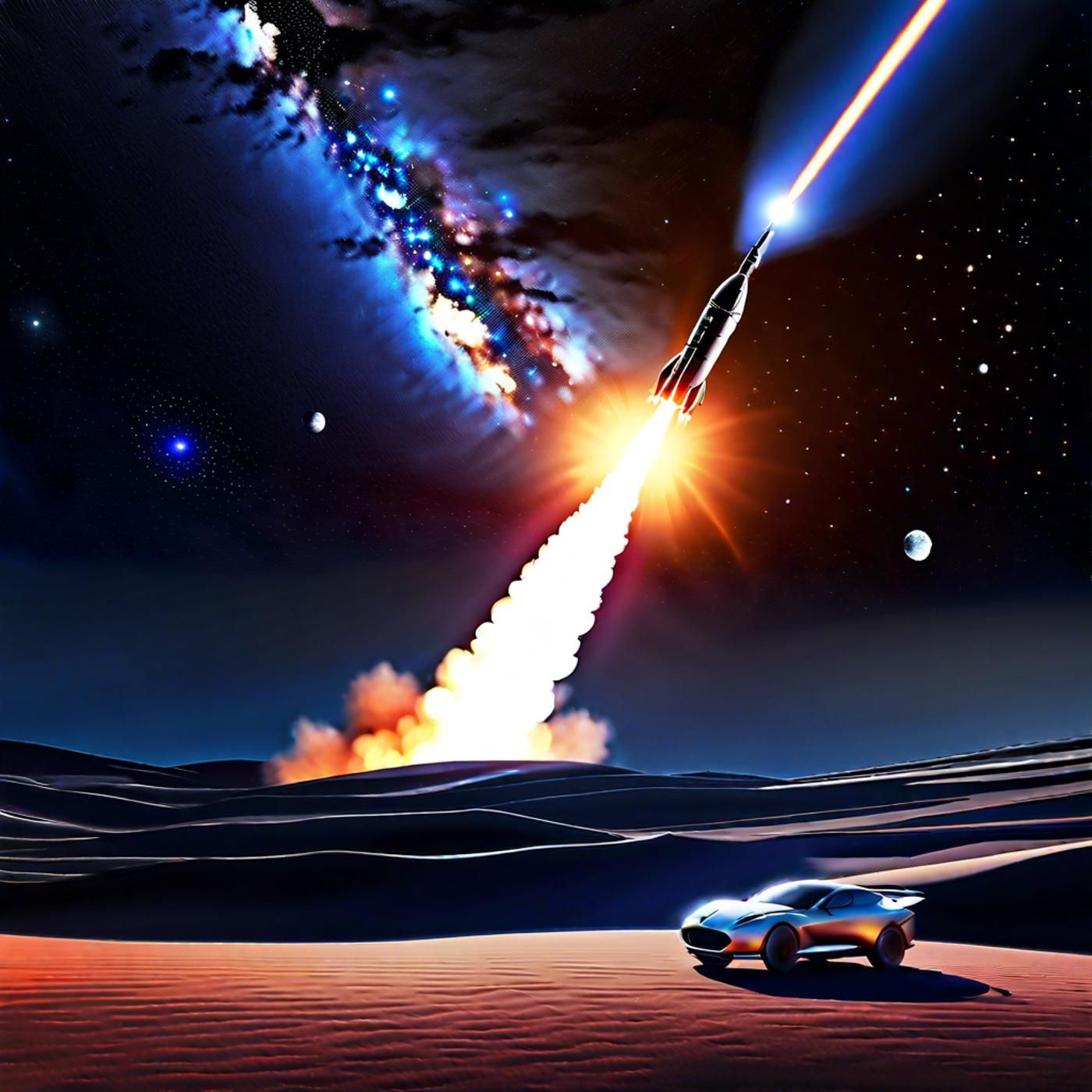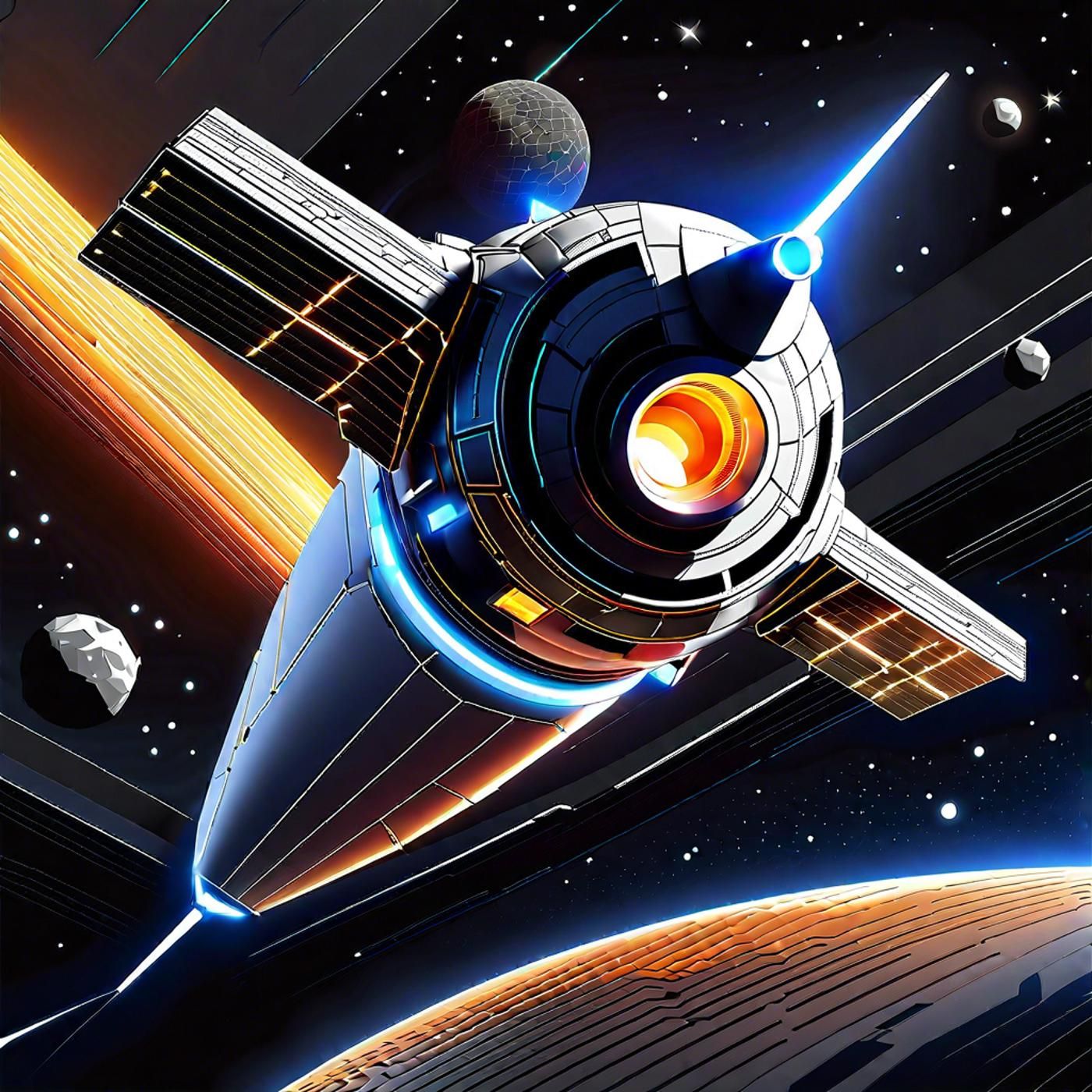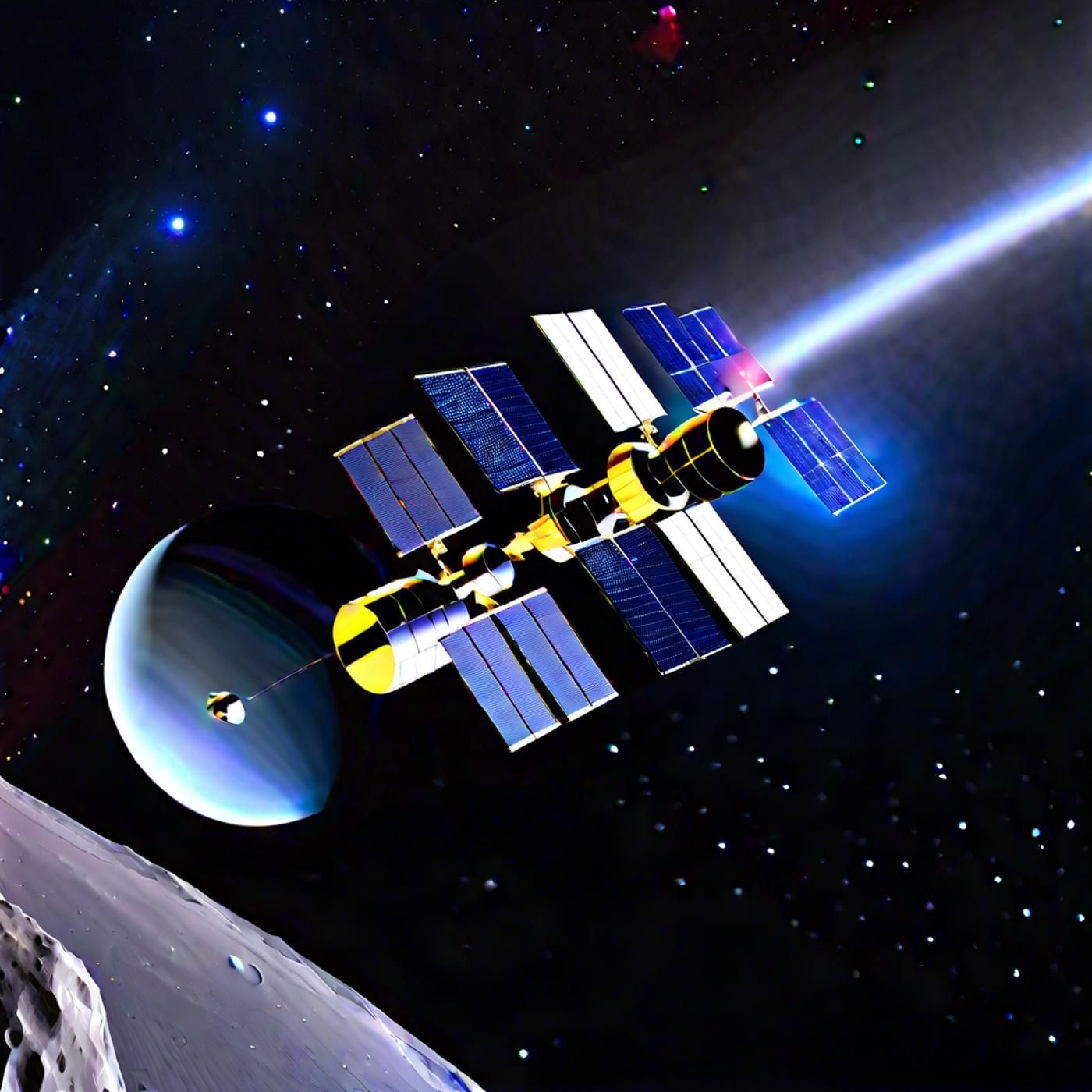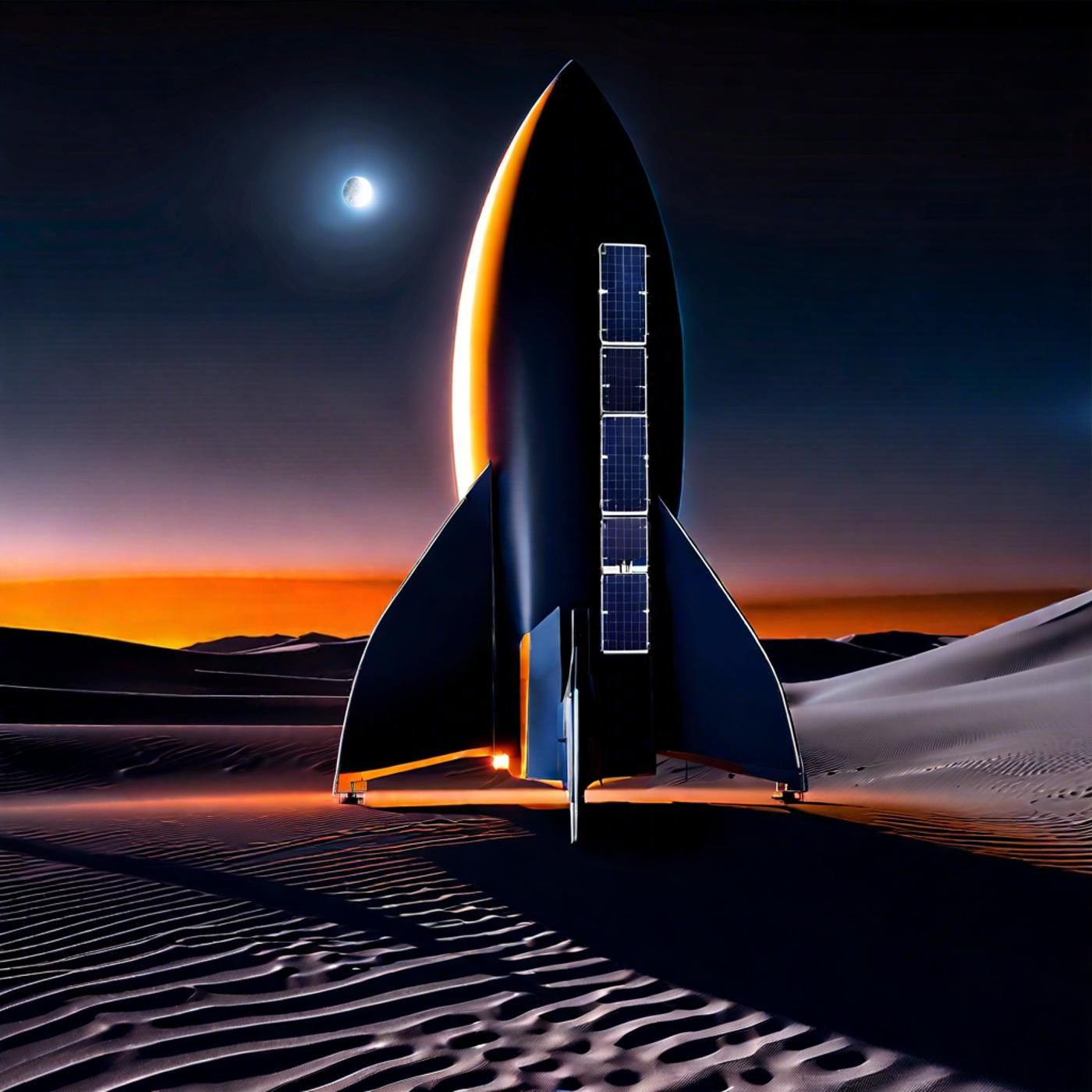S03E84: NASA's Spacewalk Halt & SpaceX's Launch Marathon
Welcome to Astronomy Daily, your daily dose of celestial wonder and cosmic news. I'm Anna, your host, and I'm thrilled to take you on today's journey through the fascinating world of astronomy. In our podcast, we bring you the latest updates, expert...
Welcome to Astronomy Daily, your daily dose of celestial wonder and cosmic news. I'm Anna, your host, and I'm thrilled to take you on today's journey through the fascinating world of astronomy. In our podcast, we bring you the latest updates, expert insights, and detailed commentary on everything happening beyond our planet.
Today we've got an exciting lineup of stories that will captivate both seasoned astronomers and curious newcomers alike. We'll start with NASA's recent decision to cancel a spacewalk again due to a coolant leak. What happened, why it's significant and what it means for future missions. Then we'll dive into a busy week of launches by SpaceX and JAXA, highlighting their challenges and achievements. We'll also explore China's Chang'e-6 mission, returning with groundbreaking samples from the moon's far side. We'll examine the close approach of two large asteroids as they fly by Earth and talk about why it's crucial to enhance our detection systems. Ever wondered why some planets have moons while others don't? We'll delve into the science behind it, and later we'll uncover the mystery behind a massive aurora in the arctic sky. So sit back, relax, and let's embark on this cosmic journey together.
00:00 Welcome to Astronomy Daily, your daily dose of celestial wonder and cosmic news
01:10 NASA calls off a spacewalk due to a leak in an astronaut spacesuit
03:12 After delays due to tropical storm Alberto, SpaceX has several upcoming launches scheduled
05:09 Japan gearing up for third launch attempt of h three rocket on June 30
06:18 The Chang'e six mission is set to return with samples from the far side
08:28 Two large asteroids will pass by Earth this week coinciding with Asteroid day
10:47 Understanding why planets have moons or don't is a complex puzzle
13:51 December 2022 aurora was unusually smooth and broad
16:26 Today's Episode Wrap
www.astronomydaily.io
www.bitesz.com
Become a supporter of this podcast: https://www.spreaker.com/podcast/astronomy-daily-the-podcast--5648921/support.
Welcome to Astronomy Daily, your daily dose of celestial wonder and cosmic news
Anna: Welcome to Astronomy Daily, your daily dose of celestial wonder and cosmic news. I'm Anna, your host, and I'm thrilled to take you on today's journey through the fascinating world of astronomy. In our podcast, we bring you the latest updates, expert insights, and detailed commentary on everything happening beyond our planet. Today we've got an exciting lineup of stories that will captivate both seasoned astronomers and curious newcomers alike. We'll start with NASA's recent decision to cancel a spacewalk again due to a coolant leak. What happened, why it's significant and what it means for future missions. Then we'll dive into a busy week of launches by SpaceX and JAXA, highlighting their challenges and achievements. We'll also explore China's Chang'e six mission, returning with groundbreaking samples from the moon's far side. We'll examine the close approach of two large asteroids as they fly by Earth and talk about why it's crucial to enhance our detection systems. Ever wondered why some planets have moons while others don't? We'll delve into the science behind it, and later we'll uncover the mystery behind a massive aurora in the arctic sky. So sit back, relax, and let's embark on this cosmic journey together.
NASA calls off a spacewalk due to a leak in an astronaut spacesuit
NASA has called off a spacewalk for the second time this month, and the reason is a bit concerning a coolant leak in an astronaut spacesuit. This recent cancellation happened on Monday when astronaut Tracy Caldwell Dyson noticed the issue just as she and her colleague Mike Barrett were about to step outside the International Space Station. The problematic leak was detected in the servicing and cooling umbilical unit, or SCU, of Dyson's spacesuit. This unit is essential as it regulates temperature and supplies necessary resources to the astronaut. The discovery was made just before their scheduled walk at around 08:52 a.m. m EDT. Both astronauts had already powered up their suits and were in the process of exiting the station's quest airlock when the water leakage was observed. NASA quickly decided to abort the spacewalk. The astronauts had to work with ground controllers to repressurize the airlock before safely returning inside the station's equipment lock. The whole process of returning inside took about an hour. Dyson described the leakage as resembling a pretty impressive snowstorm due to the ice crystals forming around the port in the scuffle. This isn't the first time this month that a spacewalk has been called off. On June 13, another scheduled spacewalk was canceled when either Dyson or Mike Dominic experienced discomfort. Although NASA hasn't disclosed further details about that particular issue. These recent incidents have significant implications for future missions. Spacewalks are critical for maintaining the International Space Station and conducting scientific experiments. The astronauts were initially planning to scrape microorganisms from the station's exterior to study potential origins of life, a study that will now be delayed. The recurring technical issues underscore the need for rigorous pre walk checks and possibly even redesigns of the spacesuit components. Ensuring the safety and efficiency of these suits is paramount, as ah, they are crucial to the success of these complex and high stakes operations in space.
After delays due to tropical storm Alberto, SpaceX has several upcoming launches scheduled
Let's dive into the flurry of recent and upcoming launches featuring SpaceX and JAXA, both of which have had a very busy week. First, let's talk about SpaceX. After a week of delays due to tropical storm Alberto bringing high seas and heavy winds to Florida, SpaceX aims to regain momentum. Notably, they have launches scheduled from all three active Falcon launchpads, including a Falcon heavy launch. These weather disruptions not only affect launch schedules but also complicate the recovery operations, as marine assets must navigate through stormy conditions. Just this past Sunday, June 23, at 08:45 p.m. pDT, SpaceX successfully launched a Falcon nine rocket from Vandenberg Space Force base in California. Carrying the second batch of group nine Starlink V two mini satellites. This mission was pivotal not only for its payload 20 satellites with 13 featuring direct to cell capability, but also for demonstrating SpaceXs rapid turnaround times. Impressively, the B 1075 booster completed this mission on its 11th flight. After a 97 day turnaround, the booster landed safely on the drone ship, stationed approximately 600 km downrange, marking another feather in SpaceXs cap, shifting gears to Falcon heavy. The 10th flight is scheduled for Tuesday, June 25, at 516 pm EDT from Kennedy Space Center's LC 39 A. The mission will deploy the goes U weather satellite into a geostationary transfer orbit. Given the satellite's substantial weight of over 5000, center core will be expended after launch, while the two side boosters perform a return to launch site landing. As if that weren't enough, SpaceX has yet another falcon nine mission lined up for June 27, launching Starlink Group ten three from Cape Canaveral's SLC 40. This will add more v two mini satellites to the constellation, further enhancing global Internet coverage.
Japan gearing up for third launch attempt of h three rocket on June 30
Now onto Jaxa vu. The japanese space agency is gearing up for the third launch attempt of their h three rocket on June 30. This follows previous attempts thwarted by a second stage malfunction. The upcoming payload is the advanced land observing satellite four, also known as Daichi four which aims to provide critical Earth observation data. This week, we also see Firefly aerospace making strides with their alpha rocket. The mission is set for June 26 from Vandenberg Space Force Base. Carrying a suite of cubesats, many of which are college built, this launch is part of NASA's effort to provide low cost access to space for educational ventures. All eyes are on the skies as these ambitious missions unfold. Not only do they offer technological advances and valuable data, but they also exemplify the sheer determination and adaptability of the space industry when faced with unpredictable challenges like weather. Isn't it thrilling to see how these space missions are pushing boundaries and expanding our reach into the cosmos? Stay tuned for more updates as these rockets make their way into space.
The Chang'e six mission is set to return with samples from the far side
Next, let's turn our gaze to the moon, particularly its mysterious far side. Chinas change six mission is set to return with some fascinating cargo surface samples from the far side of the moon. This marks a, um, milestone in lunar exploration, as its the first time well be analyzing material from this less explored region. The Chang'e six probe landed in the Apollo crater, part of the moon's largest depression. Known as the South Pole Aitken basin, this region is geologically unique, with a thicker crust and less volcanic activity compared to the near side of the moon. Expecting to find volcanic rock as old as 2.5 million years, scientists are eager to see whether the collected samples also include remnants from nearby meteorite impacts. One of the key questions scientists hope to answer is why the far side of the moon is so different from the near side. The near side is characterized by large lunar Maria basaltic plains formed by ancient volcanic eruptions. In contrast, the far side has a more rugged terrain and fewer Maria, pointing to fundamental differences in geological history. By studying these far side samples, scientists can gain insights into the moon's early evolution and the processes that have shaped its surface. Another exciting possibility is finding impact melts, fragments formed by the intense heat of meteorite impacts. Such materials can provide crucial information on the moon's impact history, offering clues about the frequency and, um, scale of early solar system collisions. The data could also help us understand the broader impact history of the inner planets, including Earth. This mission follows a series of successful lunar sample returns from the moon's near side. But Chang'e six promises to expand our knowledge considerably. The results from analyzing these far side samples will likely take years, but what we learn will contribute significantly to our understanding of lunar geology and possibly even the early conditions of the inner solar system. In the coming months, the scientific community and space enthusiasts alike will be eagerly awaiting the analysis of these samples. Stay tuned as we keep you updated on these groundbreaking discoveries.
Two large asteroids will pass by Earth this week coinciding with Asteroid day
This week, Earth will experience a fascinating celestial event as two large asteroids pass by in close succession, coinciding with Asteroid day. The first of these space rocks, asteroid 2024 Mk, was only discovered on June 16, underscoring the need for enhanced detection capabilities for potentially hazardous objects. Measuring between 120 and 260 meters in diameter, 2024 MK will make its flyby on June 29 at a distance of about 290,000 km from Earth, which is roughly 75% of the distance to the moon. While it poses no threat, its recent discovery highlights the importance of improving our ability to detect near Earth objects. The second visitor, 415029 211 UL 21, is considerably larger, with a diameter of around 2310 meters, making it bigger than 99% of known neos. This asteroid will pass Earth on June 27 at a much safer distance of more than 17 times the distance to the moon. What makes 415029 UL 21 interesting is its highly inclined orbit, which suggests it has had some gravitational interactions with large planets, possibly Jupiter. Understanding these interactions can provide valuable insights into how such large objects are redirected towards Earth. Asteroid day, endorsed by the United nations, commemorates the 1908 Tunguska event, the largest recorded asteroid impact on Earth. The aim is to raise awareness about the importance of planetary defense. The European Space Agency and its member states are at the forefront of efforts to detect and mitigate the risks posed by asteroids. Projects like the HERA mission, set to study the asteroid Dimorphos following NASA's Dart mission impact, are crucial steps in developing reliable planetary defense techniques. Amateur astronomers are in for a treat, too. On June 29, 2024, Mk will be visible with a small telescope in certain regions. ESA's Neo toolkit can help observers plan their viewing sessions. These events serve as a reminder of the dynamic nature of our solar system and the importance of continuing to develop and enhance our detection and tracking systems for neos.
Understanding why planets have moons or don't is a complex puzzle
As we mark Asteroid day, let's not only marvel at these cosmic visitors, but also support ongoing efforts in planetary defense. Ever wondered why our earth has just one moon? While planets like Jupiter and Saturn boast dozens, it all comes down to a fascinating interplay of gravitational forces and their celestial neighbors. First, let's talk about gravitational forces. Every object exerts a gravitational pull on nearby things. The bigger the object, the stronger the pull. In our solar system, the sun's massive gravity keeps planets in orbit, but planets themselves also have their own gravitational fields. This is where moons come into play. For an object to become a moon, it has to be within a planet's hill sphere, a region where the planet's gravity is dominant over the sun's. Imagine a planet's hill sphere as a sort of invisible boundary. Earth's moon, for instance, is within Earth's hill sphere close enough that Earth's gravity overpowers the sun's. Smaller planets, like Mercury and Venus, have tiny hill spheres due to their lower mass. Which means any potential moons would likely be more influenced by the sun's stronger gravitational pull, pulling them away instead. Interestingly, m just because a planet is big. Doesn't mean it'll have lots of moons. Take Mars as an example. It has just two small moons, Phobos and Deimos. Scientists think these may have been captured asteroids pulled into Mars orbit from the nearby asteroid belt. Rather than forming there originally. In contrast, gas giants like Jupiter, Saturn, Uranus, and Neptune. Have massive hill spheres capable of capturing many moons. Jupiter alone hosts 95 known moons. These giants are also much farther from the sun. Allowing their gravity to rain more dominantly over vast distances. Another theory proposes moons can form as part of a planet's creation. During the formation of the solar system, a ah rotating disk of gas and dust surrounded the young sun. This disk eventually coalesced into planets. And, in some cases, moons which orbit in the same direction as the planets. This is likely how Jupiter's and Saturn's inner moons were created. Born from the same primordial material that formed the planets themselves. Earth's moon offers a unique tale. It's widely believed it formed from a colossal collision with a Mars sized body. That happened billions of years ago. This impact knocked a massive chunk of Earth into orbit. Where it coalesced to become our moon. Evidence supporting this includes similarities between Earth's and the moon's basalts, suggesting a, uh, common origin. Understanding why planets have moons or don't. Is a complex puzzle that involves considering planetary size, gravitational forces. And historical events. Each moon tells a story of its planet's past. Whether through primordial formation, cosmic capture. Or catastrophic collisions. The differences in how these satellites originated. Reveal the dynamic and evolving nature of our solar system. Quite a cosmic dance, wouldn't you agree?
December 2022 aurora was unusually smooth and broad
In December 2022, the arctic sky was graced by a truly remarkable auroral event. One that stretched an astounding 4000 km across the polar cap. Unlike typical auroras, which can often display jagged and chaotic patterns. This one was unusually smooth and broad. Leaving scientists and observers alike in awe, uh, and curiosity about its origin. For nearly two years, the source of this mesmerizing display remained a mystery. Until a recent breakthrough by an international team of astronomers. The researchers, hailing from institutions in Japan and the United States, meticulously pored over ground based data and satellite observations recorded during the aurora's appearance. Through their investigation, they discovered a stream of supra thermal electrons emanating from the sun's corona. These electrons traveled through Earth's atmosphere above the polar region, sparking what is known as a polar rain aurora. Polar rain aurorae occur when electrons from the sun's corona penetrate Earth's magnetic field at the poles. The electrons then interact with atmospheric particles, producing light that creates the auroral display. However, such events are typically invisible to the naked eye. What made the 2022 aurora visible and uniquely smooth was an exceptionally calm period of solar wind. During that time, the solar wind density plummeted to levels as low as 0.5 particles per cubic centimeter, an extraordinarily rare phenomenon. This peaceful lull in solar wind allowed the polar rain aurora to extend further and maintain a level of consistency that is rarely seen. The astronomer's detailed analysis revealed that the key factor behind the smooth appearance was the almost non existent solar wind, which usually would distort the aurora's shape and create the jagged edges we are more accustomed to. The findings from this study provide valuable insights into the mechanisms involved in auroral formations and their variations. By understanding the influence of solar wind density on auroral displays, scientists can better predict and interpret future auroral events. Moreover, this research highlights the crucial role that citizen scientists and ground based observations play in bringing these natural phenomena to light. In conclusion, the mystery of the December 2022 aurora has been solved thanks to the collaborative efforts of the astronomical community. This smooth and extensive auroral event not only expanded our understanding of space weather, but also showcased the beauty and unpredictability of the natural world.
Today's Episode Wrap
And that wraps up today's episode of Astronomy Daily. We've covered NASA's postponed spacewalk, an exciting week of launches from SpaceX and JAXA, the Chang six mission bringing back farside moon samples, the close approach of two large asteroids, the fascinating reasons why some planets have moons while others don't, and the intricate mystery behind the massive aurora over the arctic sky. For more from our team, including regular space news, updates, and links to all the stories we featured today, visit our website at astronomydaily IO. You can also browse and listen to all our past episodes there. Thank you for joining me today. I'm Anna, and I look forward to bringing you more stellar news and insights in our next episode. Until then, keep looking up.
New to Astronomy Daily - The Podcast?
Here are some great episodes to start with.




















